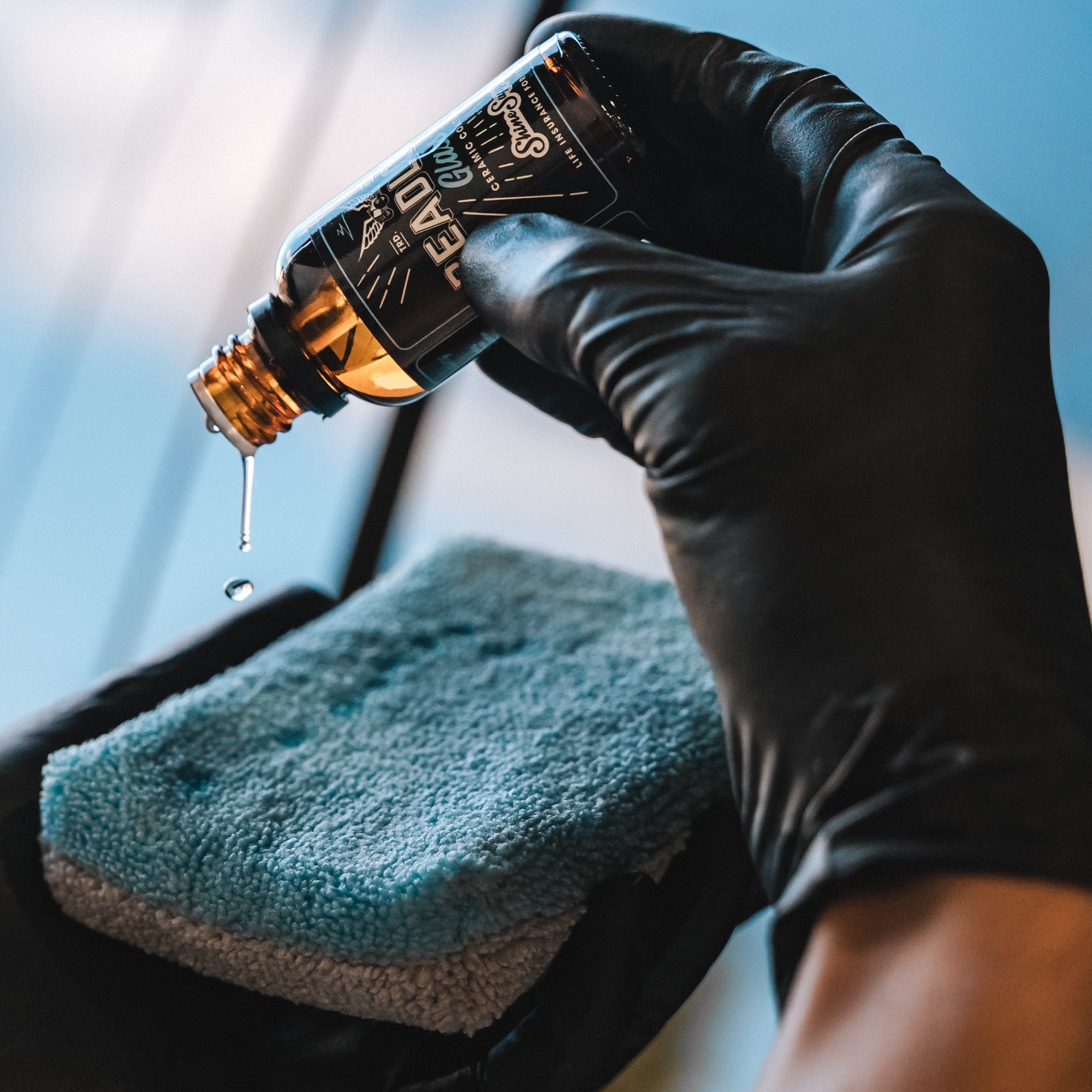The Function of Ceramic Coating in Preserving a Flawless Complete on Your Auto
Checking Out the Scientific Research Behind Ceramic Finishing and Its Effect On Auto Detailing
The application of ceramic finish in vehicle outlining represents a considerable advancement in automobile care, rooted in its innovative chemical residential properties, primarily silica dioxide and titanium dioxide. Understanding the science behind these products reveals not only the safety benefits they supply yet additionally their duty in improving an automobile's visual durability. As we check out the intricacies of the application process and the lasting ramifications for car maintenance, it comes to be clear that the selection of ceramic finishing can essentially alter one's method to cars and truck treatment. What factors to consider should be made before dedicating to this transformative service?
What Is Ceramic Coating?
Ceramic finishing is a modern solution that has actually obtained popularity in the vehicle describing market for its capability to supply resilient protection for car surface areas. This sophisticated safety layer is normally composed of silica dioxide (SiO2), which creates a solid bond with the automobile's paint, producing a sturdy guard against environmental contaminants. Unlike conventional wax or sealers, ceramic layers offer exceptional resistance to UV rays, chemical spots, and physical abrasions.
The application of ceramic finish involves a precise procedure, where the car's surface area is completely cleansed and sanitized prior to the layer is applied (Ceramic Coating). Once treated, the finishing enhances the automobile's gloss, depth, and clearness, providing a showroom-quality surface that lasts for several years. Among the essential benefits of ceramic finish is its hydrophobic properties, which repel water and dust, making maintenance easier and lowering the frequency of cleans
The Chemistry of Ceramic Coating
An essential aspect of ceramic covering depends on its chemical make-up, primarily identified by the visibility of silica dioxide (SiO2) This substance is integral to the development of a sturdy, protective layer that bonds chemically to the lorry's surface. When used, the SiO2 particles undergo a process referred to as polymerization, wherein they create a network of interconnected structures. This results in a robust, hydrophobic surface area that pushes back water and contaminants.
Along with SiO2, lots of ceramic coatings incorporate titanium dioxide (TiO2) and other additives to boost their performance characteristics. TiO2, for instance, adds to increased solidity and chemical resistance. The communication between these substances creates a distinct molecular structure that offers a high level of security against environmental variables such as UV rays, acid rainfall, and oxidation.
Furthermore, the application procedure usually involves a careful prep work of the surface to make certain ideal attachment of the finishing. This chemistry not just makes certain a durable surface but likewise boosts the aesthetic allure of the vehicle. Comprehending the complex chemistry behind ceramic coverings is necessary for detailing professionals that intend to provide exceptional defense and long life for their clients' automobiles.
Benefits of Ceramic Covering
While detailing specialists frequently highlight the benefits of ceramic layers, their benefits extend far beyond visual appeals. Ceramic finishes produce a hydrophobic surface that wards off crud, dirt, and water, dramatically minimizing the frequency of cleans and the initiative called for to maintain a vehicle's appearance.
Moreover, ceramic layers enhance the longevity of the automobile's surface. Unlike traditional waxes or sealers, which may last a few months, ceramic coverings can sustain for years, offering a long-term solution for car treatment. This resilience converts to cost financial savings, as proprietors are less likely to require regular reapplication.
In addition, ceramic coatings are immune to chemical discolorations and etching, which can happen from acidic materials like bird droppings or tree sap. This resistance not only protects the car's appearances yet likewise lessens potential damage - Ceramic Coating. Overall, the investment in ceramic coating uses auto owners a considerable return in regards to defense, simplicity of maintenance, and resilient aesthetic appeal, making it a significantly prominent selection in the realm of automotive describing
Application Process Discussed

As soon as the surface is appropriately prepared, the ceramic layer can be applied. Utilizing an applicator pad, the professional uses the covering in tiny areas, working in a crosshatch pattern to make sure even protection.
As soon as healed, the ceramic layer forms a solid bond with the paint, giving boosted security and a glossy coating. Correct application is vital to optimize the longevity and efficiency of the ceramic layer.

Lasting Effect On Car Treatment
The long-term impact of ceramic coating on lorry care is considerable, as it essentially alters just how owners preserve their automobiles. By developing a resilient, hydrophobic layer on the automobile's surface, ceramic coverings reduce the adherence of dust, gunk, and contaminants. This home minimizes the frequency of washing called for, inevitably conserving water and cleansing items.
In Addition, the UV defense offered by ceramic finishings aids to stop oxidation and fading of the lorry's paint, protecting its aesthetic allure and resale value over time - Ceramic Coating. This safety obstacle also reduces the this page chance of scrapes and swirl marks, which are usual concerns in conventional paint finishes
In addition, ceramic coverings help with easier upkeep, enabling owners to cleanse their automobiles with minimal initiative. The smooth surface makes it challenging for contaminants to bond, allowing simpler elimination during regular cleaning.
Over time, the investment in ceramic coating may lead to cost financial savings in lorry care services and products. In general, the enduring benefits of ceramic finishings not only enhance the look of automobiles however also add to a more effective and sustainable strategy to car upkeep.
Conclusion
Finally, the application of ceramic finishing stands for a substantial development in vehicle outlining, driven by its special chemical composition of silica dioxide and titanium dioxide. This innovation not only enhances the aesthetic charm of automobiles yet additionally provides durable security against environmental threats and put on. The lasting advantages, including decreased upkeep frequency and improved longevity, emphasize the web value of ceramic finishings as a crucial financial investment for preserving car look and honesty in time.
